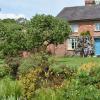Home
Tips & Tricks
Sony Tips
Sony a6400
Sony a6300
Sony a6000
Canon Tips
Canon M50 Mark II
Canon M50
Canon 6D Mark II
Canon 6D
Canon 7D Mark II
Canon 7D
Canon 90D
Canon 80D
Canon 77D
Canon 70D
Canon 60D
Canon T7 · 2000D
Canon T7i · 800D
Canon T6s · 760D
Canon T6i · 750D
Canon T6 · 1300D
Canon T5i · 700D
Canon T5 · 1200D
Canon T4i · 650D
Canon T3i · 600D
Canon T3 · 1100D
Canon T2i · 550D
Canon SL2 · 200D
Canon SL1 · 100D
Nikon Tips
Nikon D750
Nikon D500
Nikon D7500
Nikon D7200
Nikon D7100
Nikon D5600
Nikon D5500
Nikon D5300
Nikon D5200
Nikon D5100
Nikon D3500
Nikon D3400
Nikon D3300
Nikon D3200
Nikon D3100
Cheat Sheets
Sony Cheat Sheets
Sony a6300
Sony a6000
Canon Cheat Sheets
Canon M50 Mark II
Canon M50
Canon 6D Mark II
Canon 6D
Canon 7D Mark II
Canon 7D
Canon 90D
Canon 80D
Canon 77D
Canon 70D
Canon 60D
Canon T7 · 2000D
Canon T7i · 800D
Canon T6s · 760D
Canon T6i · 750D
Canon T5i · 700D
Canon T6 · 1300D
Canon T5 · 1200D
Canon T4i · 650D
Canon T3i · 600D
Canon T3 · 1100D
Canon T2i · 550D
Canon SL2 · 200D
Canon SL1 · 100D
Nikon Cheat Sheets
Nikon D750
Nikon D500
Nikon D7500
Nikon D7200
Nikon D7100
Nikon D5600
Nikon D5500
Nikon D5300
Nikon D5200
Nikon D5100
Nikon D3500
Nikon D3400
Nikon D3300
Nikon D3200
Nikon D3100


Comments
First, make sure your AF is set to C, and either single point or dynamic, so that you can nail a moving subject. Multi-area is not likely to work best. You get no choices of focal point in Auto exposure mode, so try to avoid that.
It's a big lens, but made to be hand held for this kind of work, so practice panning with it. You want to hit focus on your subject and then follow it. If your subject is standing still, it can be difficult to hold your position. You'll have to experiment a little to find the most comfortable way to hold steady.
If you're not comfortable with user settings, Sport mode should work fairly well.
Remember that it can be hard to zero in on a subject when the lens is at its maximum focal length, because the field of view is so narrow. If you're going after a bird in flight, or the like, start at a wider angle until you've got it in your focus point, and then zoom in if you can. Some things can simply be impossible to nail at the longest setting. Settle for a wider view if you have to.
Make sure you keep track of where the focus point is. It's very easy, especially with a big lens owing to the way one holds it, to disturb the control and end up with the focal point off in the sky somewhere. Use the [OK] button to recenter it.
Experiment with the effectiveness of the vibration control. Some of those lenses have gotten very good at this, allowing hand holding where once it would have been impossible. But still, a very long lens may need a fast shutter speed to avoid blur. What can be done will depend both on the lens and the operator. Without VR you'd expect to need a shutter speed of about 1/1000 to get steady results at 600mm. If your quarry is moving, you'll need a fast speed anyway to stop its motion, but if you're panning, a slower speed can work well, giving a sharp subject and a blurred background. You'll need to do a lot of experimenting to see what compromises work, as you may sometimes have to jack the ISO way up, and settle for the noise, but if the vibration control works well, you may be able to shoot at lower shutter speeds than you'd expect.
In any case, expect to have spotty results for a while as you get comfortable with it. Even the best nature photographers often expect to toss a high percentage of shots. Set your shutter mode at continuous if you can, and take short bursts, as the middle shot in a sequence will often be the sharpest.